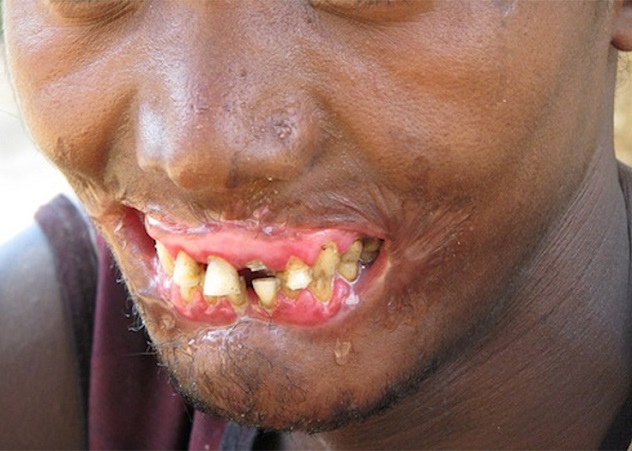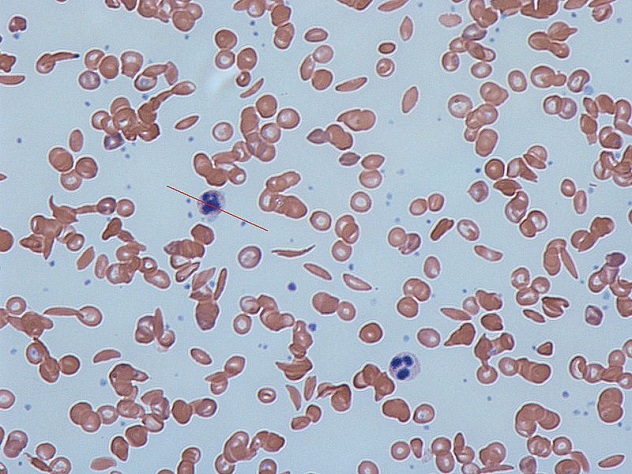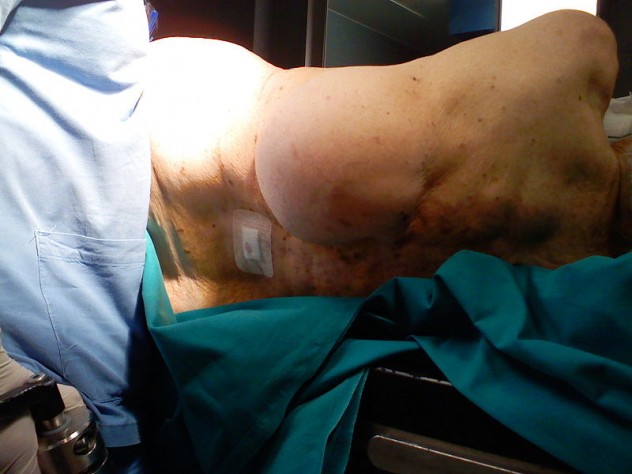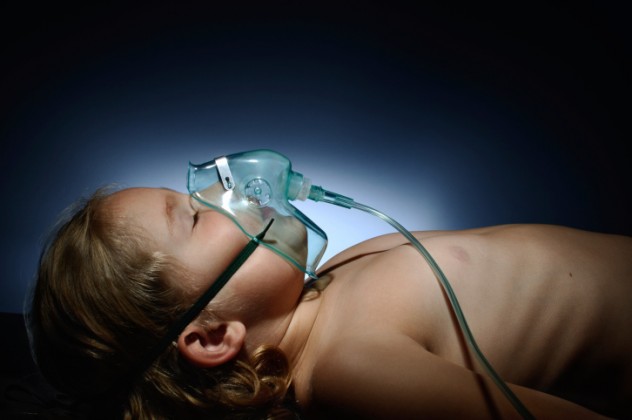 Weird Stuff
Weird Stuff  Weird Stuff
Weird Stuff  Mysteries
Mysteries 10 Tragic Disappearances and Deaths in Joshua Tree National Park
 History
History 10 Ways Childhood Really Sucked in the Old West
 Music
Music 10 Name Origins of Famous Bands from the 1990s
 Religion
Religion 10 Biggest Turnarounds by the Catholic Church
 Weird Stuff
Weird Stuff 10 Unbelievable Times Laws Had Unintended Consequences
 Humans
Humans Ten Historic Women Who Deserve Way More Credit Than They Got
 Movies and TV
Movies and TV 10 Films That Spawned Major Lawsuits
 History
History Ten Times Towns Were Wiped Off the Face of the Earth
 Creepy
Creepy 10 of the Most Disturbingly Haunted Public Houses in the UK
 Weird Stuff
Weird Stuff 10 Niche Subcultures That Are More Popular Than You Might Think
 Mysteries
Mysteries 10 Tragic Disappearances and Deaths in Joshua Tree National Park
 History
History 10 Ways Childhood Really Sucked in the Old West
Who's Behind Listverse?

Jamie Frater
Head Editor
Jamie founded Listverse due to an insatiable desire to share fascinating, obscure, and bizarre facts. He has been a guest speaker on numerous national radio and television stations and is a five time published author.
More About Us Music
Music 10 Name Origins of Famous Bands from the 1990s
 Religion
Religion 10 Biggest Turnarounds by the Catholic Church
 Weird Stuff
Weird Stuff 10 Unbelievable Times Laws Had Unintended Consequences
 Humans
Humans Ten Historic Women Who Deserve Way More Credit Than They Got
 Movies and TV
Movies and TV 10 Films That Spawned Major Lawsuits
 History
History Ten Times Towns Were Wiped Off the Face of the Earth
 Creepy
Creepy 10 of the Most Disturbingly Haunted Public Houses in the UK
10 Horrifying Diseases You Definitely Don’t Want To Catch
Disease is common, affecting every person at some point in their life. However, there are those unlucky few who contract some the rarer diseases—those that seem to do the most damage and are often the hardest to treat, let alone cure. Here are 10 diseases and disorders you really want to avoid.
10 Trigeminal Neuralgia

This particular disorder affects the fifth cranial nerve, one of the most widely spread in a person’s face. Known to hospitals as the “suicide disease,” there are two types. Type 1 is the acute, involving unbelievable pain shooting through the sufferer’s face that lasts for as long as two minutes. These attacks can be joined together over a period of two hours of agony.
Type 2 is less painful than Type 1, but still one of the hardest hits the human body can take. It is constant, rather than sporadic, with a painful burning or electric shock feeling lasting for years. Regular pain medication like morphine has no effect and anti-convulsion drugs often lose their effectiveness. Various surgical procedures have shown mild success, but are rarely anything more than temporary fixes.
9 Marburg Hemorrhagic Fever

First diagnosed in 1967 after an outbreak in a number of labs throughout Germany and Yugoslavia, Marburg hemorrhagic fever is a disease nearly identical to that caused by the Ebola virus. Monkeys who had been imported from Africa were infected and spread the disease while they were being used for polio research. So far, it is extremely rare, with less than 1,000 cases reported to date, and it’s almost always found in Central Africa.
The African fruit bat is believed to be the main source of infection, though how it spreads to humans isn’t quite known at this point. The initial symptoms are extremely close to much more common diseases such as malaria, so proper diagnosis can be quite tricky. If the infection is severe enough, bleeding in the mouth and rectum and neurologic problems arise. Due to the lack of scientific knowledge about the Marburg fever, there is no established treatment, but plasma and blood protein transplants have shown good results. As of right now, the fatality rate is wide-ranging, ranging from 23–90 percent.
8 Cancrum Oris

More commonly known as noma, cancrum oris is a gangrenous infection which attacks the facial tissue of its victims, usually children under the age of 6. Especially prevalent in poverty-stricken areas of Africa, not only does the disease have an extremely high fatality rate (80 percent), but those who survive are left horribly disfigured and often ostracized. Affecting nearly 100,000 children every year, the antibodies in the sufferer’s body get confused and turn on the soft tissue in the cheek, mouth, and nose.
Due to the swift progress of the disease, those infected are quickly disabled, unable to speak or eat normally. The disease has only made brief appearances in Europe and North American since its eradication over 100 years ago, most notably in the Nazi concentration camps. Antibiotics can stop the spread at the first sight of a lesion but they are often unavailable or too expensive.
7 Adhesive Capsulitis

Known by the catchier name of “frozen shoulder,” this disorder causes the sufferer’s shoulder to become so painful and stiff that it is virtually impossible to do anything with their arm. In addition, sleep can be difficult to come by, causing a myriad other health issues like depression and anxiety. As of now, there is no known cause for frozen shoulder, but diabetes and injuries or surgeries in the area are considered to be risk factors.
Frozen shoulder affects an estimated 2 percent of the population at some point in their lives, making it one of the most common disorders on this list, and it is extremely hard to treat. Even with regular medication and constant physical rehabilitation, it can take up to a year to restore mobility. Although there have been cases where it went away on its own, it usually took up to two years to resolve itself.
6 Complex Regional Pain Syndrome

Formally known as “reflex sympathetic dystrophy,” CRPS is a lifelong systemic disease which manifests itself as extreme burning pain, bone and skin changes, and unbelievable sensitivity to touch. It’s one of the most painful diseases in the world, ranked above childbirth and amputation on the McGill Pain Index, a method of evaluating pain developed in the early 1970s. Initially believed to be a systemic failure of the sympathetic nervous system, researchers now believe it is triggered by trauma, especially to the extremities. However, this is just a guess as of right now, which is one of the reasons there is no cure.
Various treatments have achieved a modicum of success, including one brought to us by the wisdom of tech support—“Have you tried turning it off and on again?” In 2003, a 14-year-old girl underwent treatment which consisted of a medically-induced coma with the intent of “resetting” the pain connections in her body. This is generally considered a last-ditch effort, as it carries enormous risk and numerous potential side effects.
5 Aquagenic Urticaria

Aquagenic urticaria is better known as an allergy to water. Though not a true allergy, as no histamine is actually released by the body, the disorder still presents with painful rashes that break out wherever water touches the skin. Usually within an hour after contact with water, the sufferer will end up with small wheals, which are raised, reddened areas also known as papules. It’s an extremely rare disorder, with only 100 reported cases worldwide.
Some scientists believe there may be a genetic component to the disorder, as there has been no evidence of transmission from person to person. However, most cases take place in separate families, with only a few happening to relatives. While some cases can be quite gentle, most are extremely painful, with sufferers resorting to either extremely short baths or none at all in order to avoid the pain.
4 Brainerd Diarrhea

As you can probably guess from the name, this disease is a severe, acute form of diarrhea first described after an outbreak in Brainerd, Minnesota. The exact reason for the contraction is unknown to scientists at this time, but it may be caused by the consumption of contaminated water or raw milk. Sufferers experience 10–20 episodes of explosive, watery diarrhea every day. Nearly all of the recorded outbreaks have taken place in the United States, though there have only been eight since it was first discovered.
Brainerd diarrhea can last for months—even up to a year—with no respite for those afflicted because it’s extremely resistant to any form of antimicrobial treatment. Drugs like Imodium have been reported to offer some relief, but only in very high doses. Because the exact source of the disease is unknown, there is no known preventative measure, other than to boil all well water and avoid unpasteurized milk.
3 Sickle Cell Anemia

Sickle cell anemia is a genetic blood disorder in which the red blood cells form abnormally, taking the shape of a crescent or sickle. In addition, there aren’t enough blood cells to transport oxygen throughout the body. Those afflicted with SCA also lose the defective blood cells up to 12 times faster than those without the disorder.
A mutation in one of the genes responsible for hemoglobin is the root cause of the disorder and it seems to be most prevalent among those whose ancestors lived in areas where malaria was common. The symptoms vary person to person, but fatigue and chronic pain is extremely common and never goes away. Thanks to modern medicine, it isn’t the killer that it once was, with many people making it to their 60s and beyond. However, while blood and marrow stem cell transplants have shown some promise, there is still no cure.
2 Adiposis Dolorosa

For anyone familiar with Latin or the TV show Doctor Who, it will be obvious that this particular disease has to do with fat. Also known as “Dercum’s disease” after the doctor who first described it, sufferers are plagued with tumors called lipomas all over their torso. Nearly all of those who get this disease are obese women between the ages of 35–50.
With no known cure or cause, Dercum’s disease is believed to perhaps have a genetic component to it, as it does seem to run in some families. Other scientists theorize that it is an autoimmune disorder, as healthy tissue is attacked by the body. Tthe only treatments available for this extremely painful condition focus on one symptom at a time, utilizing pain medications and weight loss strategies. Liposuction has shown some mild success at treating the disease.
1 Ondine’s Curse

For those of you unfamiliar with French or German folk tales and mythology, Ondine was a nymph who took a mortal as her lover, who swore that each one of his breaths would be a testament of his love for her. After he committed adultery, Ondine—or her father, in some versions—cursed the cheater to stop breathing the next time he fell asleep. Otherwise known as “congenital central hypoventilation syndrome,” sufferers lack the function of the autonomic nervous system which regulates breathing. This means that they have to consciously remember to breathe.
When they sleep, most are hooked up to ventilators. If they are able to survive into adulthood, the sleep masks used to treat sleep apnea tend to work well enough to enable them to live relatively normal lives. Genetics are believed to play a major role as the cause of the disease, though it has appeared in adults after major surgery or trauma.








